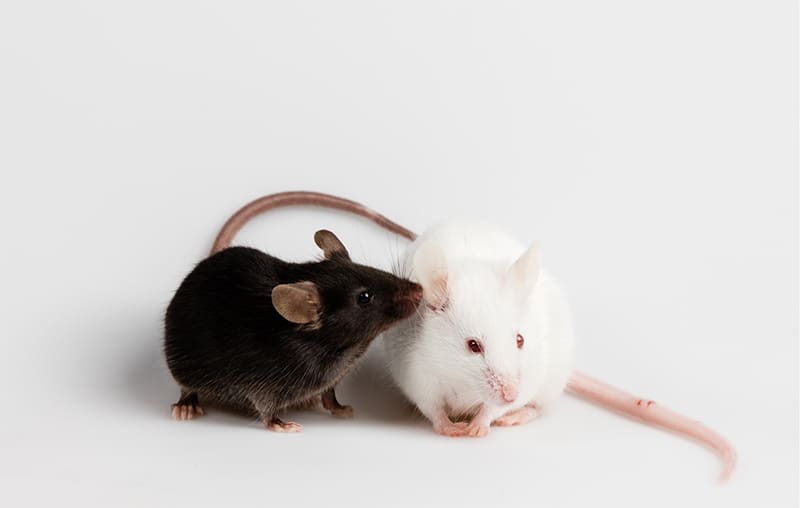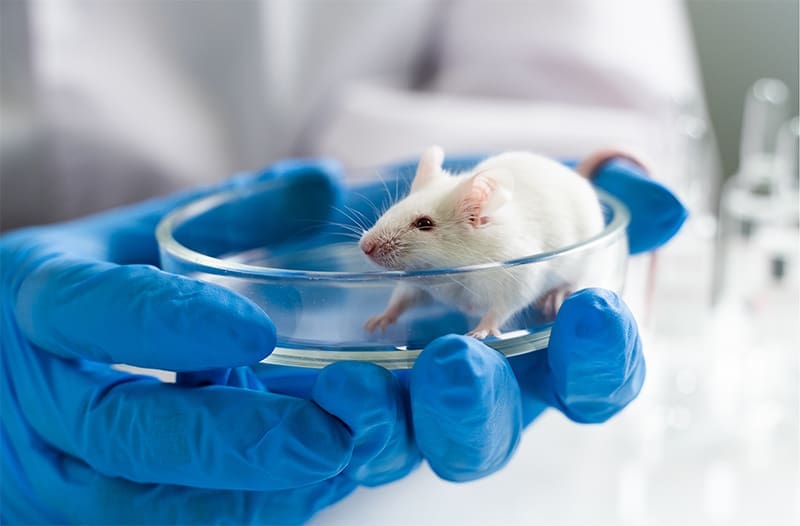Biosecurity
Biosecurity
Health reports
Ozgene has successfully finalised the relocation of all animals to a newly refitted, state-of-the-art facility on 14 December 2024. This modernised space accommodates both our custom-generated mouse lines and our mouse and rat stock strains, organised into four vivariums to maintain separate biosecurity statuses. Stock colonies are strategically divided across multiple vivariums, mitigating risks and maintaining services in the event of a biosecurity breach in any single vivarium.
Health monitoring is conducted in accordance with FELASA recommendations. Further information about the overall health monitoring program or additional testing options are available on request. Please contact vet@ozgene.com with any questions or concerns.
Strains (Ozgene):
- Genetically modified mouse lines custom-generated for customers
Health reports:
Health reports:
Strains:
Here are the 2023–2024 health reports from our previous facilities.
The Ozgene facility is home to a variety of custom-generated genetically modified mouse lines, including knockout, knock in, and humanized mice. These lines are generated specifically for Ozgene clients and R&D projects. The facility also houses mouse lines essential to the model generation process.
Health reports:
Health reports:
- 20-Jun-23 Health report (mice & rats)
- 18-Dec-23 Health report (mice)
- 18-Dec-23 Health report (rats)
- 25-Mar-24 Health report (rats)
- 26-Mar-24 Health report (mice)
- 12-Jun-24 Health report (mice)
- 18-Jun-24 Health report (rats)
- 09-Sep-24 Health report (mice)
- 11-Sep-24 Health report (rats)
- 06-Dec-24 Health report (mice)
- 09-Dec-24 Health report (rats)
Health reports:
Ozgene ARC health reports listed below are results from health testing conducted with animals under the care of the Western Australian Government’s Animal Resource Centre (ARC) and are representative of the health status of animals transferred to Ozgene ARC when it assumed operational control. Note, these reports are not part of Ozgene ARC’s long term sentinel testing protocol.
- 14-Mar-23 Health report (NRG, Rag1 KO)
- 17-Mar-23 Health report (NSG)
- 24-Mar-23 Health report (FVB, PTP, DB2, BLA, SCID)
- 28-Mar-23 Health report (NODSCID)
- 31-Mar-23 Health report (BALB/c nude)
- 04-Apr-23 Health report (ApoE-KO)
- 04-Apr-23 Health report (AJ, B10ScSn)
- 04-Apr-23 Health report (Arc(S))
- 06-Apr-23 Health report (BALB/c)
- 06-Apr-23 Health report (C57BL/6J)
- 06-Apr-23 Health report (NOD, mdx, CBA-Cah, K18-hACE2)
- 06-Apr-23 Heath report (Rats – BN, SD, LE, WI, Drd1a)
Health testing
Our sentinel program adheres to the standards set by the Federation of European Laboratory Animal Science Associations (FELASA). Please refer to the health reports above for a specific list and the frequency of virus, bacteria, fungi and parasitology testing. Our sentinel testing process is described below.
- When cages are changed, a sample of dirty bedding is collected and mixed with other samples.
- Bedding from every cage in the vivarium is included in this process.
- Mixed bedding is added to sentinel cages.
- Sentinels are exposed to dirty bedding for 3-6 months prior to health testing.
- Live sentinel animals are sent to an external testing laboratory, Cerberus Sciences, to test for specific pathogens quarterly or annually.
Housing

In the months following the transition from ARC to Ozgene ARC, all ARC animals were transferred into Individually ventilated cages (IVCs), which offer several biosecurity advantages over other types of cages. IVCs have their own ventilation systems that prevent the spread of airborne contaminants, including bacteria, viruses, and fungi. Each cage has its own filter and exhaust system, which reduces the risk of cross-contamination between cages and animals. IVCs also offer better temperature and humidity control, which promotes the health and welfare of the animals. The use of IVCs helps to ensure the highest standards of animal welfare and biosecurity, which are crucial for producing reliable research outcomes.
Fumigation
Each Ozgene ARC area, including the IVCs and equipment, was fumigated prior to populating the area with animals. The fumigation was performed by LAF Technologies using SixLog iHP® (ionised Hydrogen Peroxide) technology for the elimination of environmental bio-contamination, including viruses, bacteria, fungi/mould, and microbial spores. Post-fumigation samples from each area were incubated for 7 days and analysed by Biotest Laboratories to detect any growth on biological indicators.


